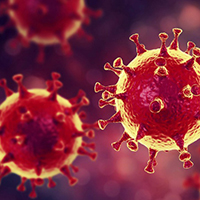Predicting pulmonary embolism in patients infected with COVID-19 based on D-dimer levels and days between diagnosis of the infection and D-dimer determination

All claims expressed in this article are solely those of the authors and do not necessarily represent those of their affiliated organizations, or those of the publisher, the editors and the reviewers. Any product that may be evaluated in this article or claim that may be made by its manufacturer is not guaranteed or endorsed by the publisher.
Authors
Ruling out pulmonary embolism (PE) can be challenging in a situation of elevated D-dimer values such as in a case of COVID-19 infection. Our objective was to evaluate the difference in D-dimer values of subjects infected with COVID-19 in those with PE and those without and to analyze the predictive value of D-dimer for PE in these subjects based on the day of D-dimer determination. This was an observational, retrospective study, conducted at a tertiary hospital. All subjects with PCR-confirmed COVID-19 infection requiring hospital admission at our institution between the months of March and April 2020 were included in the study. We compared D-dimer levels in subjects who went on to develop a PE and those who did not. We then created a model to predict the subsequent development of a PE with the current D-dimer levels of the subject. D-dimer levels changed over time from COVID-19 diagnosis, but were always higher in subjects who went on to develop a PE. Regarding the predictive model created, the area under the curve of the ROC analyses of the cross-validation predictions was 0.72. The risk of pulmonary embolism for the same D-dimer levels varied depending on the number of days elapsed since COVID-19 diagnosis and D-dimer determination. To conclude, D-dimer levels were elevated in subjects with a COVID-19 infection, especially in those with PE. D-dimer levels increased during the first 10 days after the diagnosis of the infection and can be used to predict the risk of PE in COVID-19 subjects.
CibeRes, Ciber de Enfermedades Respiratorias, Spain;
Germans Trias i Pujol Research Institute (IGTP), Badalona, Spain;
Departament de Medicina, Universitat Autònoma de Barcelona, Spain
Departament de Medicina, Universitat Autònoma de Barcelona, Spain
CIBERSAM, Madrid, Spain;
Early Psychosis: Interventions and Clinical-detection (EPIC) lab, Institute of Psychiatry, Psychology and Neuroscience, King’s College London, London, UK;
Department of Clinical Neuroscience, Stockholm Health Care Services, Stockholm County Council, Karolinska Institutet, Stockholm, Sweden
CibeRes, Ciber de Enfermedades Respiratorias, Spain;
Germans Trias i Pujol Research Institute (IGTP), Badalona, Spain;
Departament de Medicina, Universitat Autònoma de Barcelona, Spain
CibeRes, Ciber de Enfermedades Respiratorias, Spain;
Germans Trias i Pujol Research Institute (IGTP), Badalona, Spain;
Departament de Medicina, Universitat Autònoma de Barcelona, Spain
How to Cite

This work is licensed under a Creative Commons Attribution-NonCommercial 4.0 International License.






